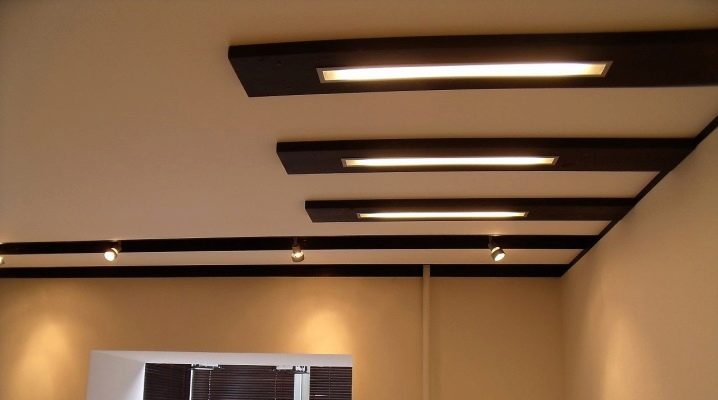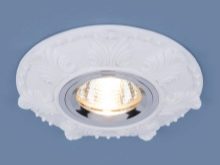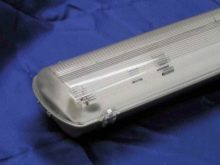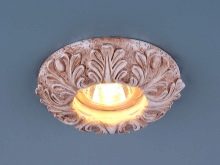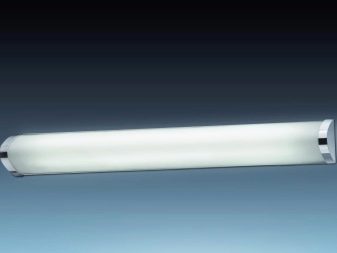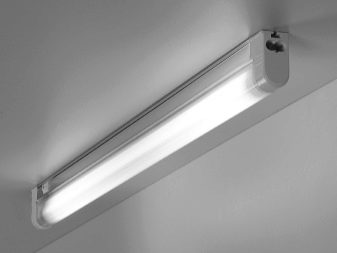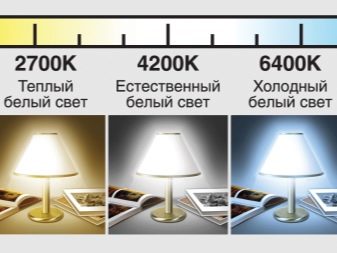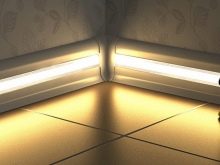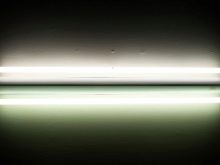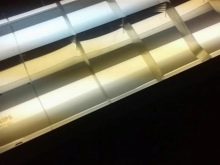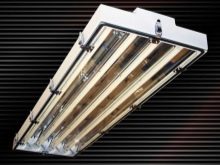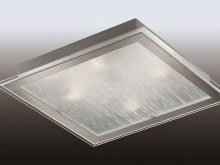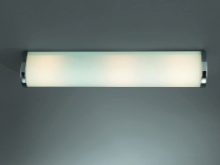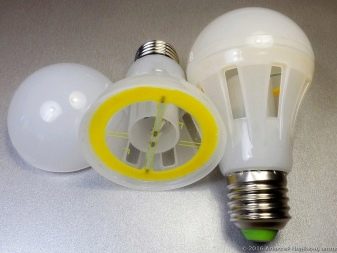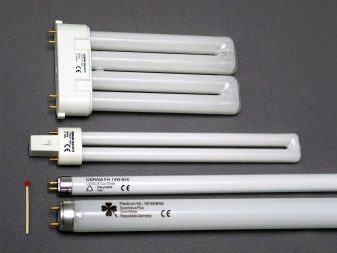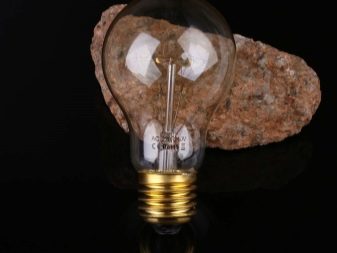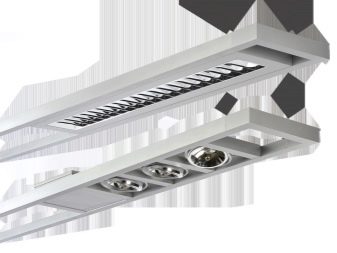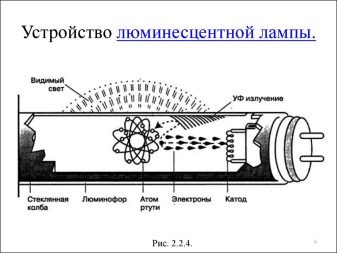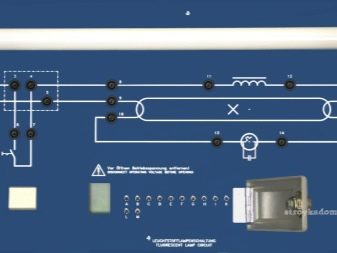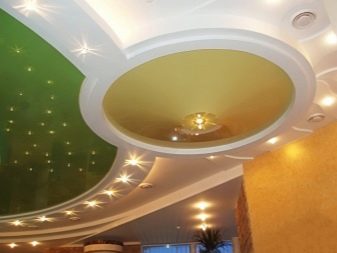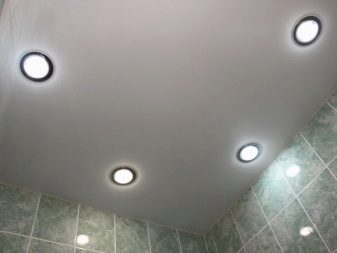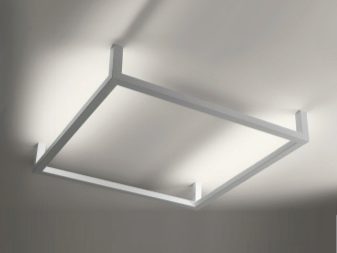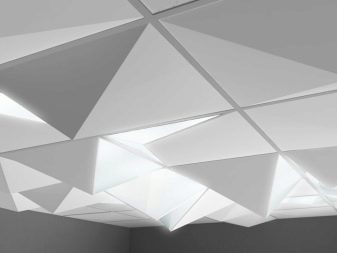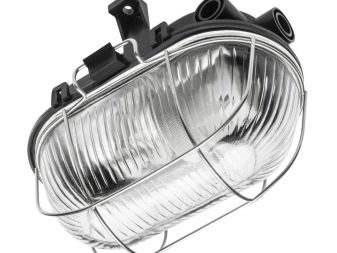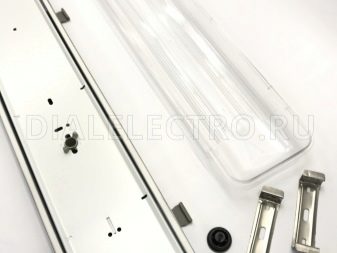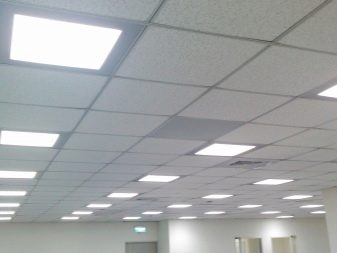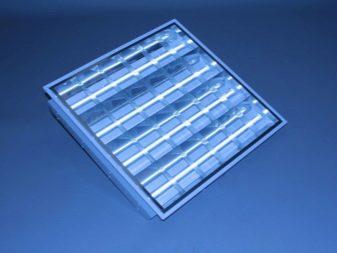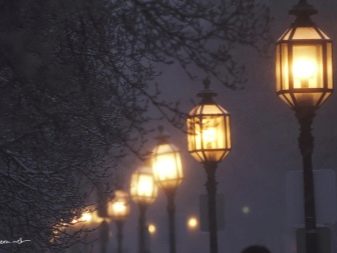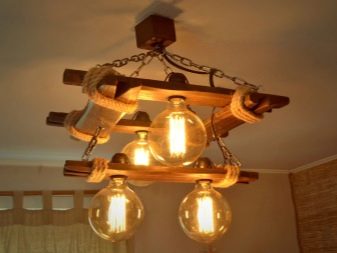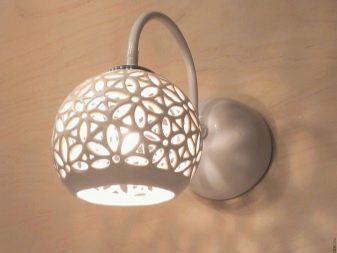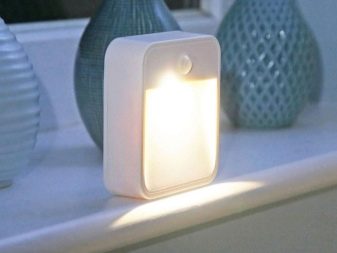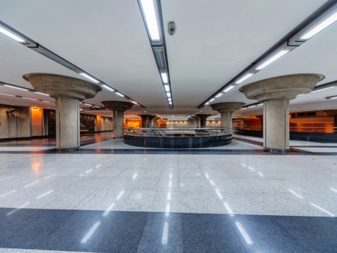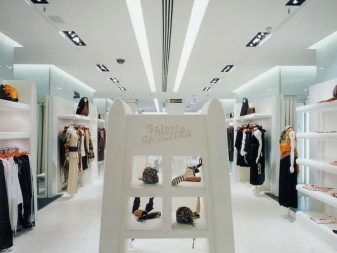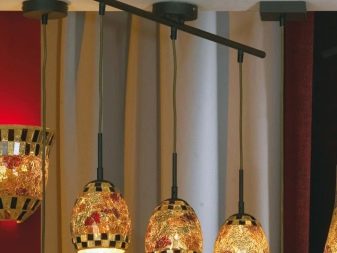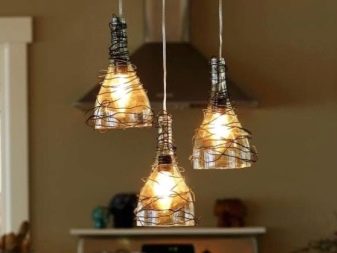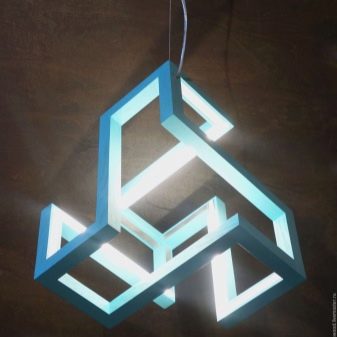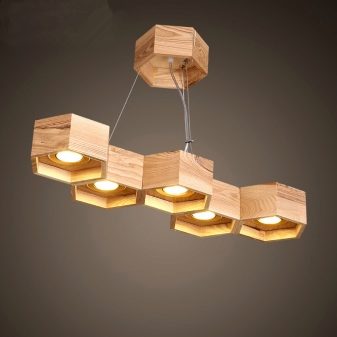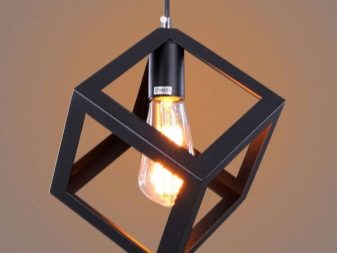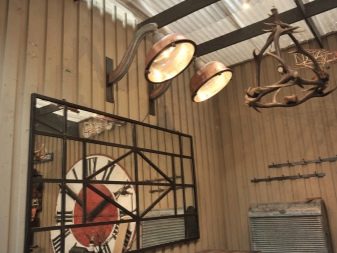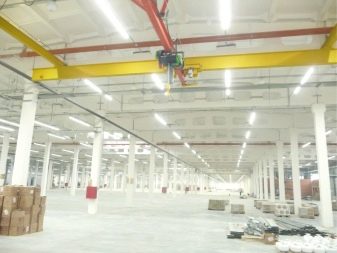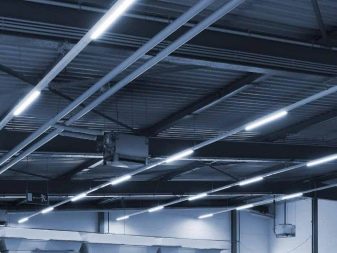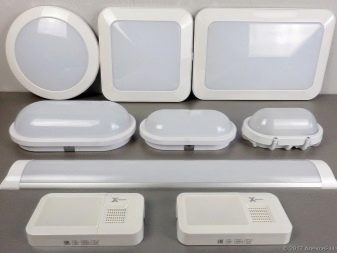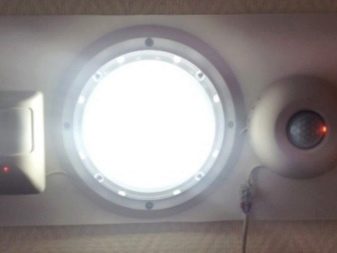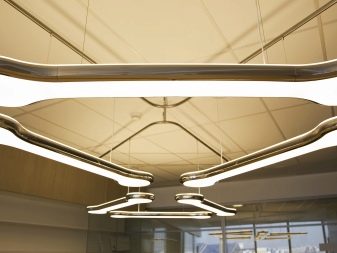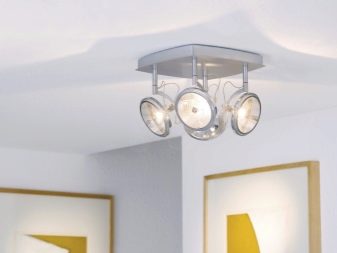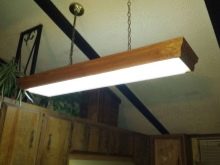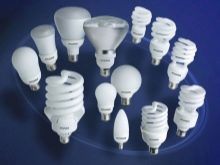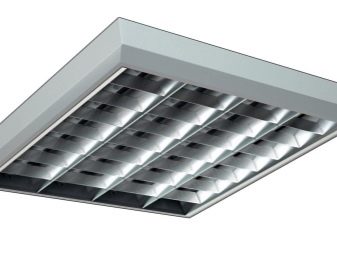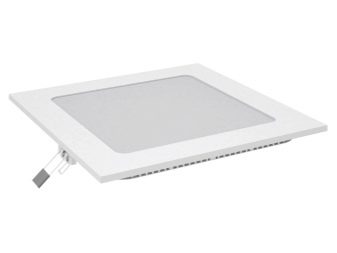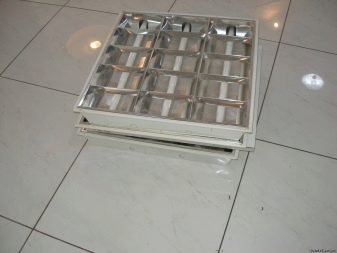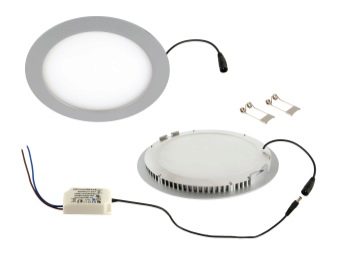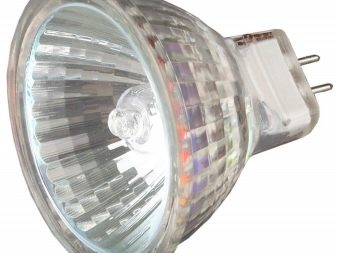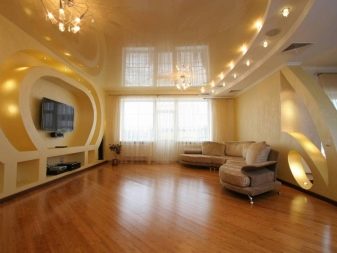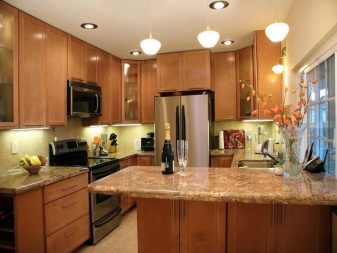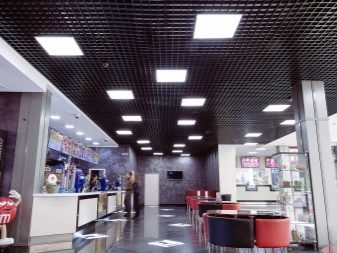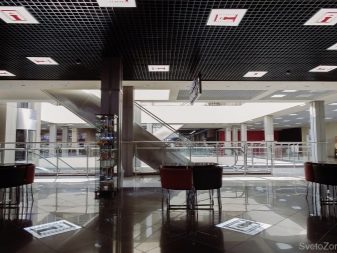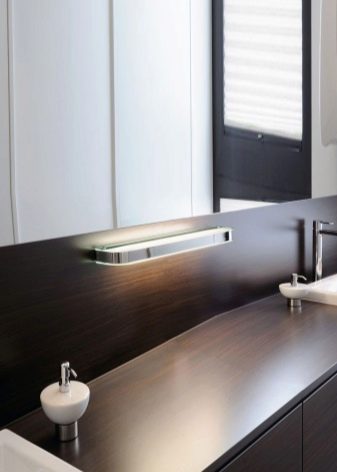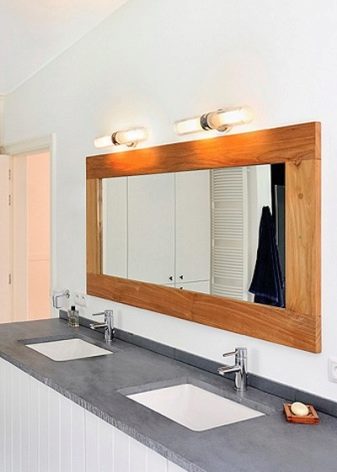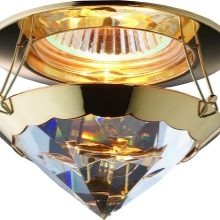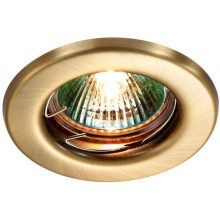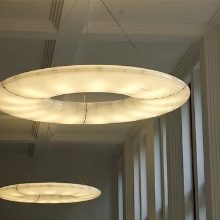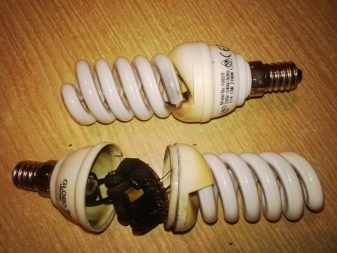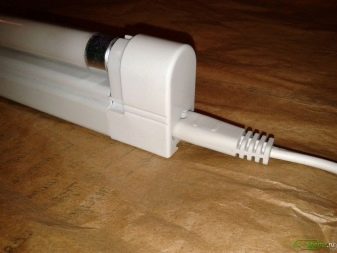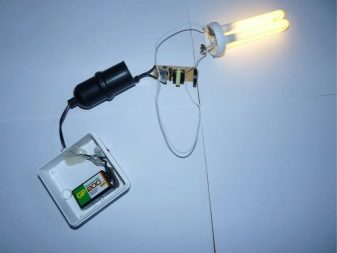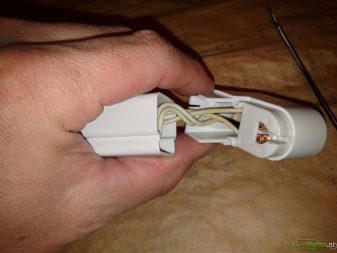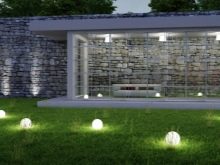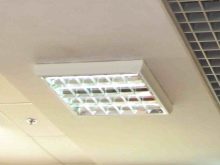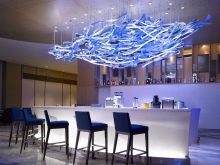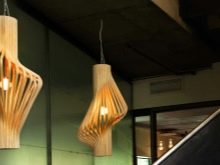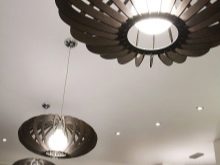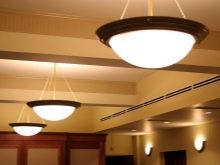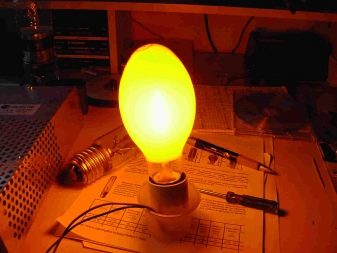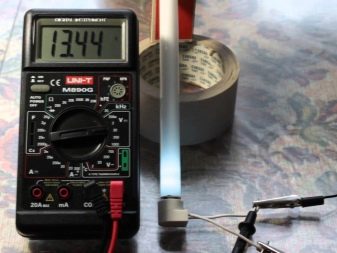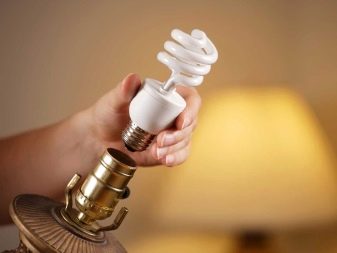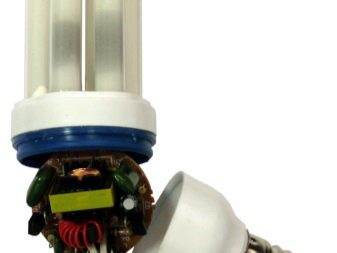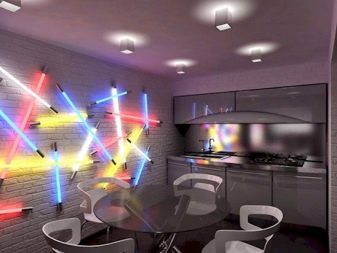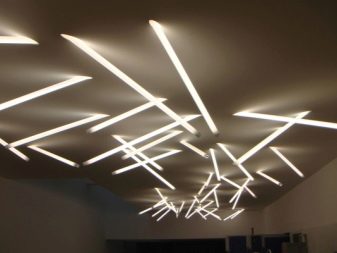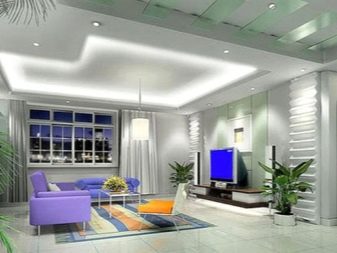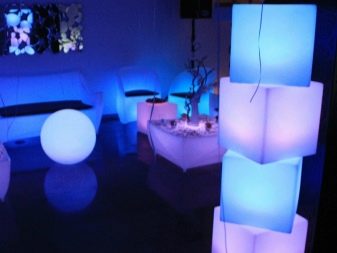Fluorescent lights
Lighting is an essential attribute of any room. Today several types of light sources are used for its organization. Each of them has unique optical parameters and is suitable for solving specific problems. In a special group should be allocated fluorescent lamps, which have proven themselves in various industries.
Features, advantages and disadvantages
Fluorescent lamps, which are often called fluorescent lamps, are distinguished by simplicity and unique lighting characteristics. These products are valued for their economy and versatility.
Among the positive aspects of these devices are several features:
- Low power.This allows you to significantly save electricity, in which such lamps are second only to LEDs.
- High efficiency. This characteristic is several times higher than that of ordinary bulbs with a tungsten filament.
- Long service life. If you operate them correctly, the lamps can work up to 12 thousand hours. Therefore, very often such devices are mounted in places where it is rather difficult to replace them.
- Various characteristics of the light flux. The color can change, depending on the internal filler, while the light spreads evenly throughout the volume.
Fluorescent lamps are not a universal solution, as they have several significant drawbacks:
- The lamp contains mercury vapor. This substance is very dangerous for humans. Therefore, such products should be operated carefully. Upon expiration of the service life, the lamps must be disposed of using special technologies.
- The quality of lighting depends on the ambient temperature. The lower it is, the weaker the luminous flux will be. But if the lamps are used in domestic premises, then this effect is almost leveled, since the conditions here are almost always the same.
- Fluorescent lamps are very sensitive to intermittent blackouts.If this happens constantly and unexpectedly, then this can reduce the life of the device. Experts recommend using them only in those places where the risk of fan-shaped disconnection or the occurrence of mains voltage drops is minimal.
- The work of inexpensive models may be accompanied by an unpleasant sound - a buzz.
Device and principle of operation
Fluorescent lamps are made in the form of flasks of various shapes, but, regardless of this, they all consist of the following basic elements:
- Phosphor (opal diffuser, etc.). It is a layer of special paint that is applied to the inside of the lamp. Used to filter the light flux and obtain a certain spectrum.
- Glass tube It is completely sealed. Inside the flask is injected gases (in most cases, mercury), which are evenly distributed throughout the volume.
- Tungsten coils. They are located on the edges of the flask. Special outputs are connected to them, which are used to connect the lamp to the network. In some models, ready-made connecting cords are used that simplify operation.Each helix is coated with barium oxide, which perfectly fulfills the functions of a cathode.
- Frame This often includes the ceiling covering the lamp. These elements are used for decorating products.
- Ballast. The device needs to ensure the normal operation of the entire system. There are several types of similar structures differing in the way of control.
The algorithm of the fluorescent lamp can be described in several successive steps:
- Current is supplied to the lamp contacts. In this case, the starter initiates the desired voltage, which is transmitted to the tungsten spiral.
- During this period, an electromagnetic field arises between the spirals and acts on inert gas vapors. This leads to the formation of ultraviolet light.
- Passing through the fluorescent coating on the glass, ultraviolet is converted to the visible spectrum and goes outside.
Characteristic
Fluorescent lamps can be found both in everyday life and in industry.
Fluorescent lamps are distinguished by several unique parameters:
- Power. This figure can vary in the range from 5 to 58 watts.
- Light flow.This value changes, depending on the amount of phosphor. Standard models for indoor lighting give a flow of 1 to 3.6 thousand lm. But for some energy-saving modifications, this figure may be about 400 lm for a single-layer phosphor coating.
- The color rendering index varies from 50 to 98, depending on the type of phosphor surface.
- Colour temperature. From this value depends on whether the luminous flux will be warm or cold. In various types of lamps, the color temperature can reach 3000-7000 K.
Kinds
Lamps of this type are distinguished by sets of parameters, which allows them to be divided into certain types.
Depending on the location on the surface, the designs are:
- Recessed - the frame of the lamp when installing hides in a special niche in the wall. These products are the most common and practical.
- Overhead - the device is located directly on the surface.
Open-type luminaires can be divided into linear, angular and annular. The first today are found everywhere.
Virtually all types of devices are complemented by reflectors and mechanical switches.
Luminaire housing may also have different characteristics.Dust-proof or hermetic frames can be found on the market. They are used for operation in specific conditions where a conventional lamp will not withstand the load.
Modern office modifications are complemented by a mirror shielding grid, which not only diffuses light, but also gives originality to the product.
Depending on the power, fluorescent lamps can be divided into the following types:
- Stationary. Energy is supplied to the lamp from a standard electrical network. They are connected to it using sockets or special adapters.
- Autonomous. Lamps on batteries are great for domestic use, as they allow you to move the design, regardless of the location of the outlet.
Special attention should be paid to protected luminaires. Such models are made from special materials that can withstand explosions. Use them in rooms with special conditions. These designs perfectly maintain high loadings, and also are supplemented with the dust and water tight case and a protective metal grid.
Directional lighting devices can be divided into single and modular systems.The last version of products suggests the possibility of using structures both individually and in a small bundle. Modules may vary in size and method of connection. They are usually found in office or industrial premises.
Depending on the supply and consumption of energy, the device can be divided into:
- Compensated. Such lamps when igniting do not emit flicker.
- Uncompensated. At the moment of switching on, a flicker appears that can last for a certain time. The use of such devices in industrial facilities is undesirable. A large number of them can lead to the melting of the contacts of switches and the loss of current in the wires.
Types of fastening
Installation of fluorescent lamps is almost no different from the installation of other similar structures.
Depending on the mounting methods, they can be divided into wall and ceiling.
The first type of construction is relatively rare. In most cases, they are used in the domestic sphere as small sconces and other similar appliances. Ceiling modifications are more versatile and practical.
The fixing of all these elements can be done using several standard methods:
- Hanging the case on special cables. This method is used in industrial facilities where you need to place several dozen products in rows. Installation is possible if special grooves for fastening cables are provided on the housing of the lamp.
- Rigid mounting with mounting plates or slats. Often, such systems are complemented by many household appliances. This method can be used for both ceiling and wall modifications of products.
Forms
Design characteristics of fluorescent lamps today are limited only by the lamp that is used inside the case. The most popular are long frames, where direct lamps are used. But on the market you can find round models of devices that are complemented by several small lighting devices.
In offices, square pendant modifications are increasingly being used that illuminate the premises well. There are more refined forms that are relatively rare.
Dimensions
Dimensions of the lamp also depend on the installed inside the lamp.
Today there are several popular sizes of similar products:
- 2x36 cm. The weight of the lamp does not exceed 2.5 kg, whereas the power can reach 49 W. The service life of such products is about 50 thousand hours.
- 4x36 cm. Constructions can already weigh up to 2.7 kg. But such a lamp with proper operation will last 100 thousand hours.
- 4х18 cm. Household models which can be operated at a temperature from +1 to +45 degrees. The weight of the product reaches 3.5 kg, and the period of operation is 50 thousand hours. The power of one such module is 33 watts.
- 60x60 cm. Universal square lamps, which give power up to 42 watts. They can be used at ambient temperatures from -30 to +40 degrees.
There are other sizes of fluorescent lamps, but they are quite rare and they are often made to order.
Materials
The main materials for the manufacture of fluorescent lamps are glass and metal. Today on the market are aluminum modifications that differ in color and texture and are characterized by strength and durability.
Very often, ceiling lamps are made from various types of plastic, polycarbonate and other polymers.Glass is used not only in lamps, but also for decorating frames.
Application options
The main purpose of fluorescent lamps is to create a comfortable indoor environment that allows you to perform work, regardless of natural light. Today, such structures are widely used.
Depending on the application environment, they can be divided into several types:
- Household. A wide group of fixtures. Here you can find appliances for the bathroom, as well as kitchen modifications. Some of them perfectly complement the living rooms, but they are found only in specific styles of interiors.
- Office. The most common lamps are models for the ceiling "Armstrong". They are suspended and allow you to organize the optimal lighting in the offices, and in the hallway or reception.
- Industrial. Devices of this type differ in special technical characteristics. They are able to tolerate low or high temperatures. Their enclosures are additionally protected with durable materials.
Manufacturers
The quality of the fluorescent lamp depends not only on its technical parameters, but also on the brand.
Today, many companies are engaged in the manufacture of such products, among which there are several quality manufacturers:
- SLV. Fixtures of the German company are among the highest quality in Europe. The range has several dozen modifications that are suitable for both office and residential premises.
- Novotech. Hungarian lamps are reliable because the manufacturer uses the most modern technology. The company produces not only fluorescent, but also halogen energy-saving modifications.
- OMS. Slovak company focuses its efforts on meeting the needs of its customers. In their assortment you will find both expensive designs and products of an economy class.
Possible problems
Luminescent-type lamps are simple and reliable designs, but sometimes they can fail. Before looking for the cause of a breakdown, you just need to make sure that current is flowing to the device. To do this, check the connecting terminals with the help of special devices.
There are several other common types of damage to these products:
- Tripping protection.Often this occurs when there is a circuit in the electrical network, as well as in the event of a breakdown of the input capacitor. You can eliminate this disadvantage by replacing the capacitor. It is also desirable to check the contacts of the starter and cartridge.
- Lack of ignition. This effect occurs when a weak current flows into the flask. Therefore, in the first place, this indicator is checked by a tester. If, when turned on, a luminescence appears at the edges of the tube, the cause of this is a starter failure. This can be fixed only by replacing this device. Sometimes only one end of a mare can shine. Here you need to check whether you have connected the lamp.
- Flashing lights. This phenomenon occurs due to a broken starter, which is desirable to replace or a small voltage in the network.
- Unauthorized inclusion. If this effect is quite common, then you can fix it only by installing a new lamp.
How to choose?
There are many fluorescent lights.
Selecting similar products, you should consider a few simple recommendations:
- Decide where the lamp will be installed.If it needs to be installed on the street, then it is important that it can withstand temperature extremes and withstand climatic factors.
- It is important that the voltage of the electrical network is suitable lamp lamp. If this is not observed, then it may simply flicker or give off light poorly.
- Design and dimensions of the lamp. Often, devices are manufactured for various purposes, so they can be completely different in size. The style of the design should match the style of the room.
- Pay attention to the technical parameters. It is important to choose not only power, but also the type of luminous flux. This will help create a comfortable lighting for high-quality performance of the tasks.
How to check the health?
Malfunctions of fluorescent lamps are often caused by the failure of systems that organize and control the flow of current:
- Throttle. The normal operation of this device does not imply that it is accompanied by other sounds.
- Starter. To test this mechanism, it should be connected to the lamp and the socket outlet in series.
- Capacity of the capacitor.
Check all the characteristics of the lamp should be only with completely disconnected electricity. To measure using a multimeter or ohmmeter. To obtain the resistance data of the lamp, you need to get an element from the luminaire, and then connect the probes of the device to the released outputs.
It is worth mentioning that fluorescent lamps are gradually removed from production and operation due to their possible danger - the presence of mercury in the structure. Modern technologies make it possible to replace such lighting devices with more secure ones.
Beautiful interiors
Thanks to fluorescent lamps, you can decorate the most unexpected and super-original interiors, for example, futuristic. This is how unusual the kitchen looks like, on the white painted brick wall of which there are multi-colored lamps resembling Star Wars swords.
Daylight lamps will make you forget about the darkest night, if they are hidden on the white ceiling of the living room with the same color of the floor, walls and curtains on the windows. Bright accents here are chairs, sofa, carpet and green plants.
Round and square lamps of different colors will fill the living room with a special atmosphere,making it unusual and even mysterious.
How to replace fluorescent lights, see the following video.
